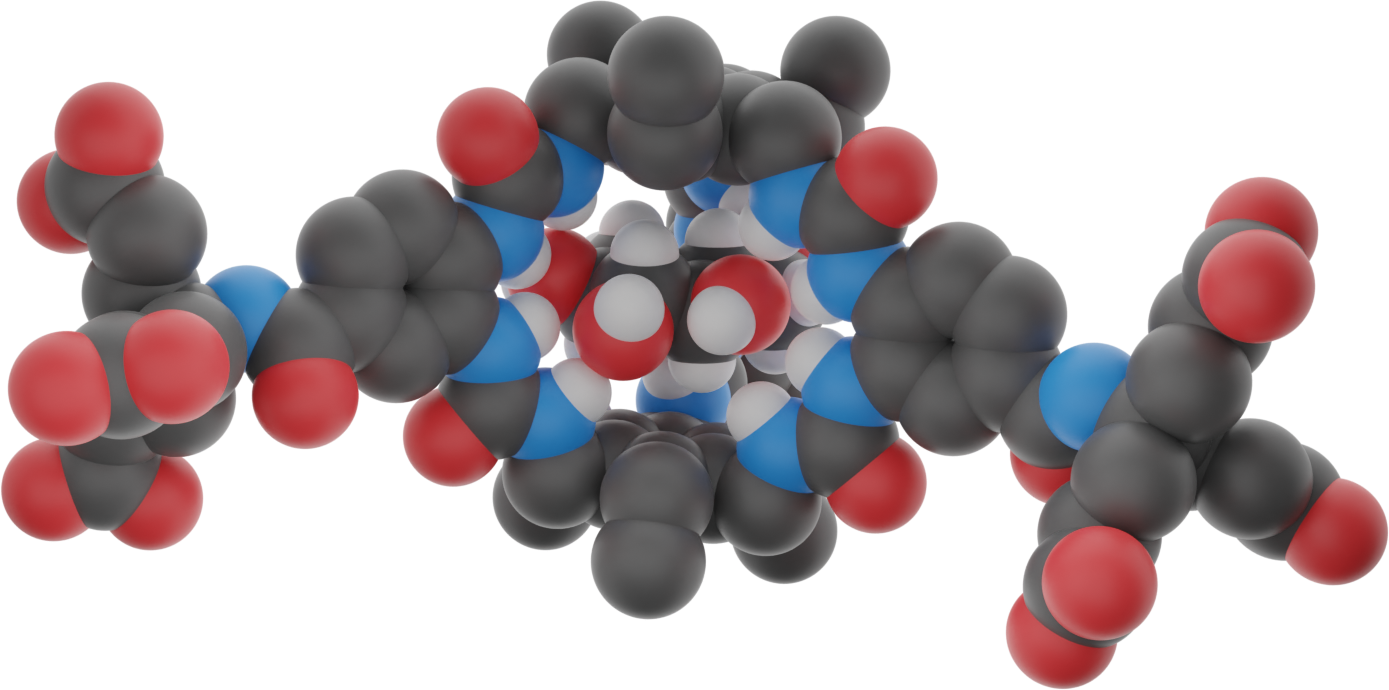Innovation for Continuous Glucose Monitors
Our Technology
Our principal technology is the world’s most selective synthetic Glucose Binding Molecule (GBM) – a perfectly optimised 3D-scaffold matched to bind glucose.
Specific molecular recognition is routine for biology, but has proved difficult to achieve in synthetic systems. Carbohydrate substrates are especially challenging, because of their diversity and similarity to water, the biological solvent.
The GBM technology, fundamental to our approach in glucose sensing, is a synthetic receptor for glucose that is biomimetic in both design and capabilities.
The core structure is simple and symmetrical, yet provides a cavity which almost perfectly complements the all-equatorial β-pyranose form of glucose.
-
Design of the Glucose Binding Molecule.
Left –The X-ray structure of the Glucose/Galactose binding protein showing the placement of hydrophobic residues (TRP 183 and PHE16) above and below the faces of β-glucose and polar residues (i.e. ASP 14) around the polar ‘rim’ which was the inspiration for the design of the GBM.
Centre - Space filling model of β-glucose (the most prevalent form of glucose in solution) depicted with hydrophobic top and bottom faces due to non-polar C-H bonds and hydrophilic, polar rim with polarised O-H bonds.
Right – Space filling model of β-glucose bound into the cavity of the GBM showing the exceptional size, shape and polarity complementarity. See: Tromans et al. Nature Chemistry volume 11, pages 52–56 (2019) for full details of this discovery.
Versatile signal coupling
PoC glucose sensing assays using both optical and electrochemical signals
Highly glucose selective
Reducing the potential for interferences
Thermally and hydrolytically stable
Carbometrics’ GBMs are extremely robust. They can withstand high temperatures, years in solution and extreme pH’s. They can even be steam sterilised
Scalable production
Carbometrics’ GBMs are produced by a streamlined, scalable synthesis:
Lower potential COGS
Oxidatively stable
Carbometrics’ GBMs are extremely resistant to oxidation and have great potential to be used in long term implantables


